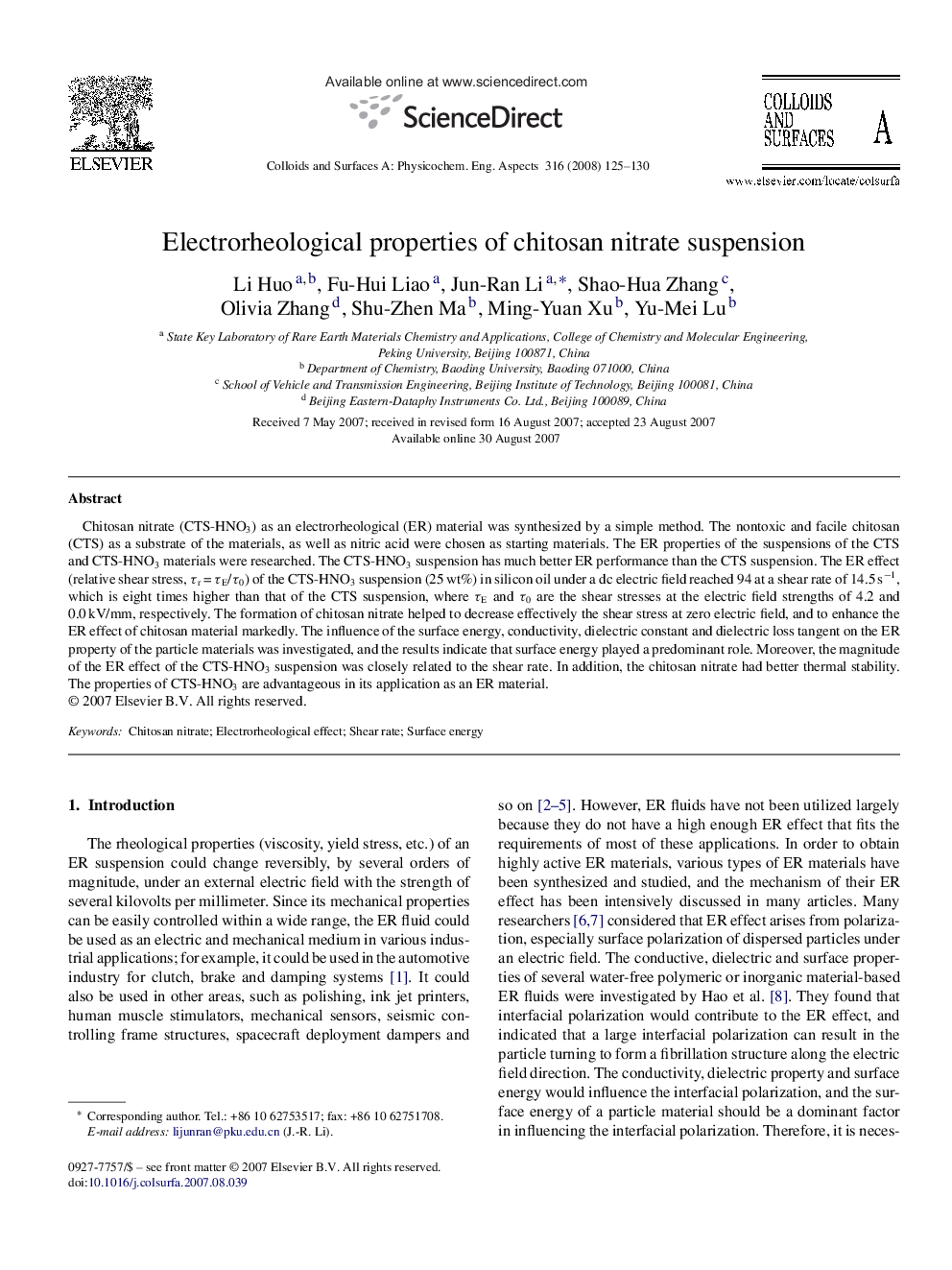| Article ID | Journal | Published Year | Pages | File Type |
|---|---|---|---|---|
| 597033 | Colloids and Surfaces A: Physicochemical and Engineering Aspects | 2008 | 6 Pages |
Chitosan nitrate (CTS-HNO3) as an electrorheological (ER) material was synthesized by a simple method. The nontoxic and facile chitosan (CTS) as a substrate of the materials, as well as nitric acid were chosen as starting materials. The ER properties of the suspensions of the CTS and CTS-HNO3 materials were researched. The CTS-HNO3 suspension has much better ER performance than the CTS suspension. The ER effect (relative shear stress, τr = τE/τ0) of the CTS-HNO3 suspension (25 wt%) in silicon oil under a dc electric field reached 94 at a shear rate of 14.5 s−1, which is eight times higher than that of the CTS suspension, where τE and τ0 are the shear stresses at the electric field strengths of 4.2 and 0.0 kV/mm, respectively. The formation of chitosan nitrate helped to decrease effectively the shear stress at zero electric field, and to enhance the ER effect of chitosan material markedly. The influence of the surface energy, conductivity, dielectric constant and dielectric loss tangent on the ER property of the particle materials was investigated, and the results indicate that surface energy played a predominant role. Moreover, the magnitude of the ER effect of the CTS-HNO3 suspension was closely related to the shear rate. In addition, the chitosan nitrate had better thermal stability. The properties of CTS-HNO3 are advantageous in its application as an ER material.
